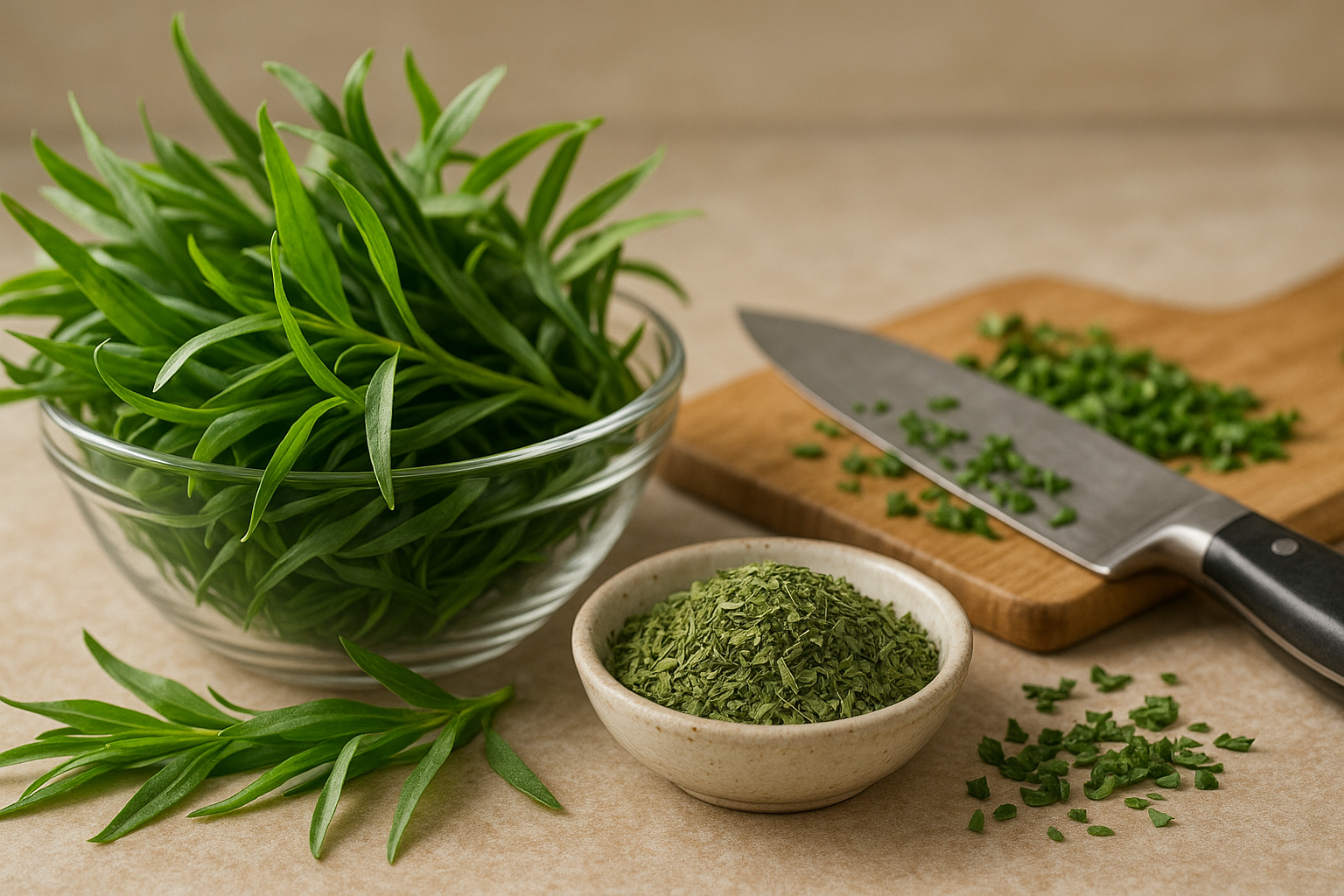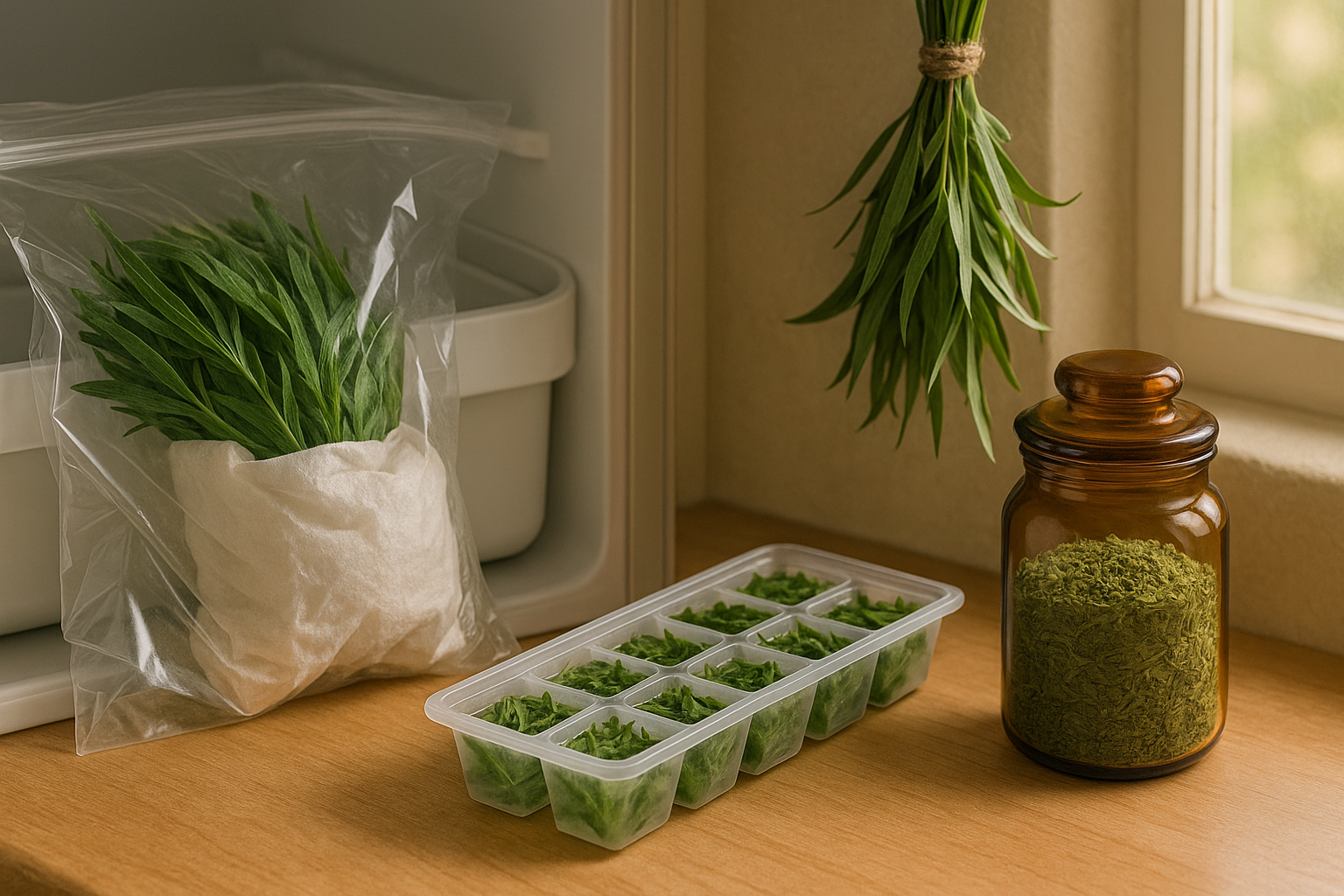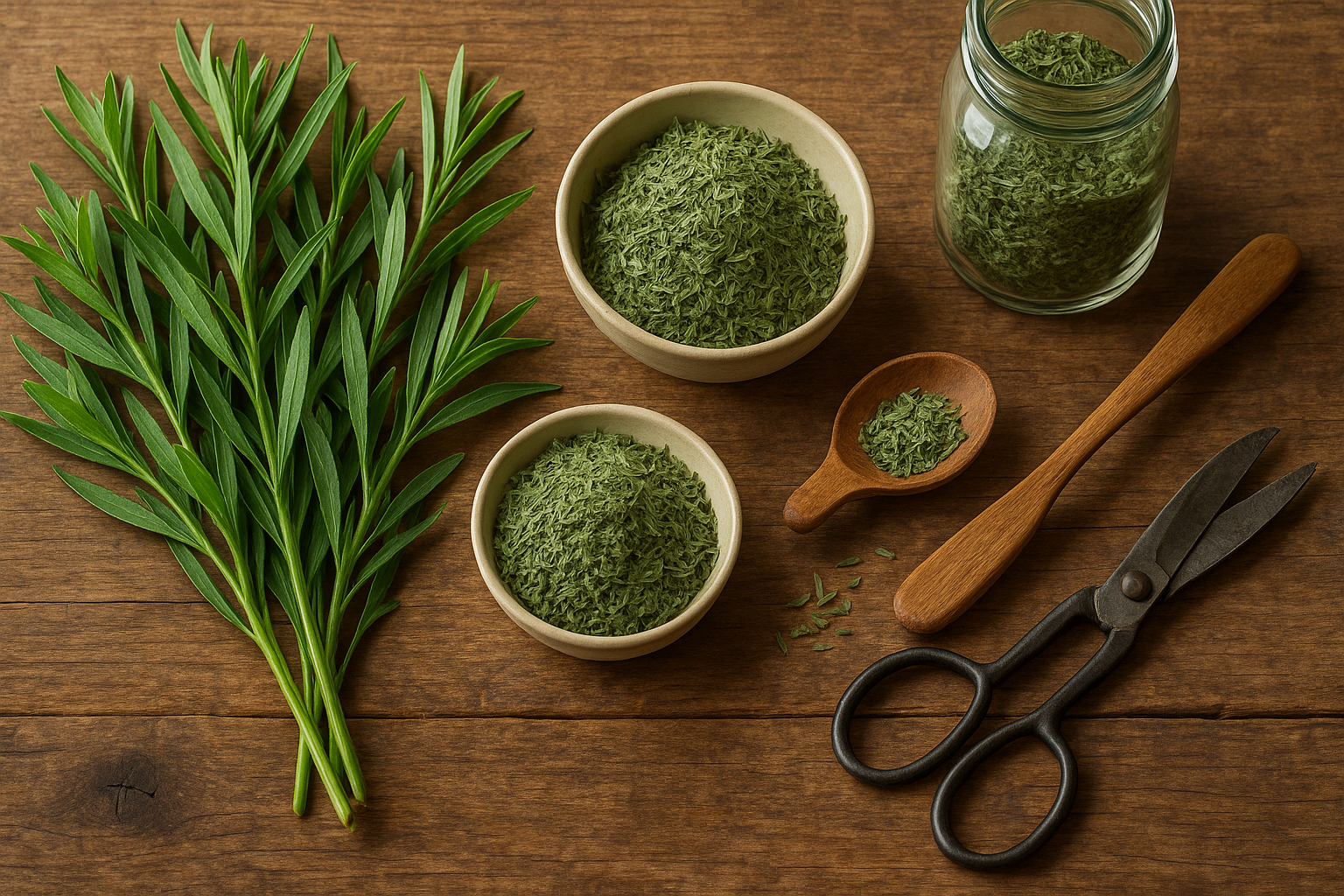Introduction to Tarragon and Its Culinary Use
Cooking with tarragon opens up a world of aromatic and elegant flavors, often transforming simple dishes into something unforgettable. Tarragon, an herb native to Eurasia and North America, is especially prized in the culinary world for its distinctive, slightly bittersweet taste with hints of anise and licorice. There are three main varieties: French tarragon, the gold standard in cooking for its complex and subtle flavor; Russian tarragon, which is hardier but milder and less aromatic; and Mexican tarragon, also known as Mexican mint or Texas tarragon, which offers a similar profile but thrives in warmer climates and adds a unique twist to classic dishes.
Tarragon has cemented its reputation in French cuisine—think classic béarnaise sauce, chicken tarragon, or simple vinaigrettes elevated by a subtle herbal touch. Its popularity stems not only from its flavor but also from its ability to complement and enhance other ingredients like poultry, fish, eggs, and even some desserts. Whether you’re using fresh sprigs or opening a jar of dried leaves, each form of tarragon offers unique culinary opportunities.
Fresh tarragon delivers a vibrant, bright herbal note, perfect for finishing sauces, tossing in salads, or infusing into oils. Dried tarragon, more concentrated and slightly muted, is convenient for longer cooking processes where its flavor can slowly and seamlessly infuse. Both forms have a place in the kitchen—experimenting with each allows you to explore different dimensions of this classic herb and find the best pairing for your favorite recipes.
Fresh vs Dried Tarragon

Fresh tarragon brings a distinctive, memorable punch to any dish with its bold, anise-like flavor that’s both bright and subtly sweet. If you’ve ever nibbled a raw sprig, you’ll notice hints of licorice and a grassy, herbaceous freshness that instantly wakes up the senses—a favorite in classic French cuisine for good reason. Its aroma is equally powerful, reminiscent of a spring garden with just a whiff.
Fresh tarragon is best when you want its unique notes to shine. Try adding torn leaves to creamy salad dressings, Béarnaise sauce, roast chicken, or lemony fish just before serving.
In contrast, dried tarragon changes both in taste and scent. The vibrant licorice intensity fades to a milder, more muted version that’s less complex and slightly more bitter. While it can’t fully replicate the zing of fresh tarragon, dried tarragon still offers a warm, earthy undertone that’s perfect for slow-cooked meals.
It works well stirred into savory stews, soups, or marinades, especially where longer cooking times coax out its lingering flavors. For example, dried tarragon is a smart pantry addition when prepping hearty chicken casseroles, vegetable soups, or homemade vinaigrettes, as its smoother profile won’t overpower other spices.
Ultimately, fresh tarragon is your go-to for vibrant finishing touches and salads, while dried tarragon is a convenient stand-in for deeply flavored, cooked dishes. Knowing which to use helps you make the most of this versatile herb’s contrasting personalities.
How to Substitute Fresh Tarragon for Dried and Vice Versa
When substituting fresh tarragon for dried—and vice versa—the golden rule is to use a 3:1 ratio, since dried herbs are much more concentrated in flavor. This means 1 tablespoon of fresh tarragon is roughly equal to 1 teaspoon of dried tarragon.
This substitution works well in cooked dishes like soups, stews, and sauces, where the heat helps dried tarragon’s flavors infuse and mellow out. For example, if your recipe calls for 2 teaspoons of dried tarragon but all you have is fresh, use 2 tablespoons of chopped fresh tarragon instead.
On the other hand, when a recipe uses tarragon to finish a dish—like in salads, vinaigrettes, or garnishes—it’s better to stick with fresh tarragon if possible. Its delicate, anise-like aroma and subtle brightness can’t be perfectly duplicated by the dried version. Dried tarragon can taste slightly more bitter and earthy, lacking the vibrant punch that fresh leaves provide.
If you must use dried tarragon in these cases, try adding it earlier in the cooking process to allow it to soften and blend into the other flavors. Always taste as you go, since the intensity can vary by brand and the age of the dried herb. Remember, dried herbs lose potency over time, so older jars might need a tiny pinch more.
In summary, substitute fresh for dried (or vice versa) when cooking, but prioritize fresh tarragon for raw uses to fully capture its unique flavor.
Best Ways to Use Fresh Tarragon in Cooking
Fresh tarragon is a versatile herb that brings a burst of anise-like, slightly sweet flavor to a variety of dishes. Knowing how to use it can elevate your cooking in simple, delicious ways.
A classic use is as a finisher: sprinkle chopped fresh tarragon over roasted chicken or fish right before serving to brighten the dish without overpowering its flavors.
Tarragon is also perfect in salads—try whisking it into a lemony vinaigrette and tossing with crisp greens, radishes, or cucumber for a refreshing twist.
Delicate sauces, like the French Béarnaise or a quick pan sauce for sautéed fish, truly shine with tarragon stirred in just at the end.
It pairs beautifully with eggs too; fold it into scrambled eggs or an omelet for a subtle herbal lift, or mix into a creamy potato salad for extra dimension.
Tarragon complements mild proteins like chicken and fish but also matches tender spring vegetables such as asparagus, peas, or artichokes.
To maintain its delicate flavor, always add fresh tarragon at the very end of cooking or just before serving—high heat and long cooking can dull its aroma and taste.
For a simple weeknight meal, scatter fresh tarragon over roasted vegetables, or mix it into a yogurt-based sauce for grilled meats or fish.
In short, fresh tarragon offers a quick way to enhance everyday dishes and is especially well-suited to recipes that celebrate fresh, light ingredients.
Best Ways to Use Dried Tarragon in Cooking
Dried tarragon is a kitchen staple that really shines in recipes requiring long, gentle cooking, such as stews, soups, and braised meats. Its delicate, slightly sweet, anise-like flavor develops best when it has plenty of time to infuse, so add it early in the cooking process rather than at the end.
For an even stronger fragrance, try rehydrating dried tarragon before use: simply steep a teaspoon of the herb in a tablespoon of warm water for five minutes, then add the entire mixture to your dish.
Where to Use Tarragon
French cuisine especially loves tarragon in dishes like chicken fricassée, creamy sauces, and classic Béarnaise. But it also works wonders in:
- Seafood chowders
- Tomato-based stews
- Roasted root vegetables
Baking with Tarragon
If you enjoy baking, sprinkle a small amount of dried tarragon into savory breads, cheese scones, or herbed biscuits for a subtle twist.
Tarragon and Eggs
Tarragon pairs particularly well with eggs—try whisking a pinch into frittatas or quiches, or mixing it into a homemade herb mayonnaise.
Although dried tarragon lacks the sharpness of fresh, its mellow character makes it a versatile choice for pantry-friendly meal prep.
As a tip, store your dried tarragon in an airtight container away from light to keep its flavor at its best, and remember—a little goes a long way.
By using these techniques and pairing suggestions, you’ll get the most out of dried tarragon and bring classic herbal depth to everyday meals.
Storage and Preservation Tips for Tarragon

Storing tarragon properly helps preserve its unique, peppery flavor for as long as possible. For fresh tarragon, a simple way to keep it vibrant is to rinse the sprigs, gently pat them dry, and wrap them loosely in a damp paper towel. Tuck the bundle inside a plastic bag or airtight container, then store it in the refrigerator’s crisper drawer—this keeps the leaves fresh for up to a week.
If you need longer storage, freezing is easy: chop the leaves, distribute them in an ice cube tray, cover with water or olive oil, and freeze. You’ll have ready-to-use tarragon for months.
Drying is another popular method, especially effective with homegrown or farmers’ market tarragon. Gather small bunches, tie them with kitchen twine, and hang in a warm, well-ventilated spot out of direct sunlight. Once the leaves are brittle, strip them off and store in an airtight glass jar away from heat and light. You can also speed up the process by using a dehydrator set at a low temperature.
Dried tarragon keeps for about six months, but to check its potency, crush a few leaves between your fingers—if the aroma has faded or the flavor is bland, it’s time for a refresh. Always remember: dried herbs lose potency faster than whole spices, so label jars with purchase or drying dates and use them within a year for the best taste in dishes like béarnaise sauce or herb butter.
Conclusion & Quick Pairing Suggestions
Fresh tarragon brings a bright, slightly sweet anise flavor that shines in salads, vinaigrettes, and as a finishing herb on chicken or fish, while dried tarragon offers a more subdued, earthy taste perfect for slow-cooked dishes like stews or soups.
Try fresh tarragon with eggs, seafood, or in a classic béarnaise sauce, and use dried tarragon to enhance roasted potatoes, marinades, or creamy sauces. For a quick flavor boost, add sprigs of fresh tarragon to lemony chicken, or sprinkle dried tarragon into a mushroom sauté. Both forms pair beautifully with ingredients like lemon, mustard, and cream.
Don’t be afraid to experiment—swap fresh for dried, but remember to use less dried since its flavor is more concentrated. A little tarragon in your scrambled eggs or stirred into Greek yogurt dip can instantly elevate your everyday dishes, adding a unique, herbal kick that keeps meals exciting.
